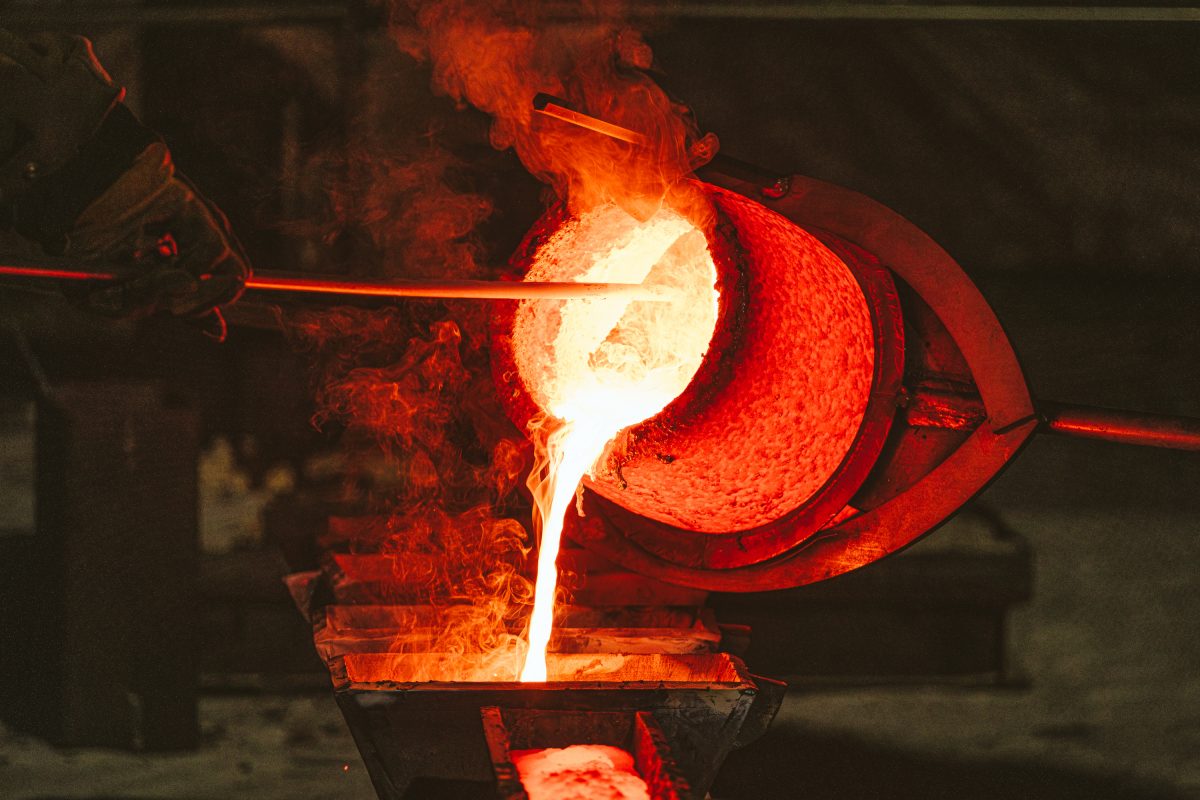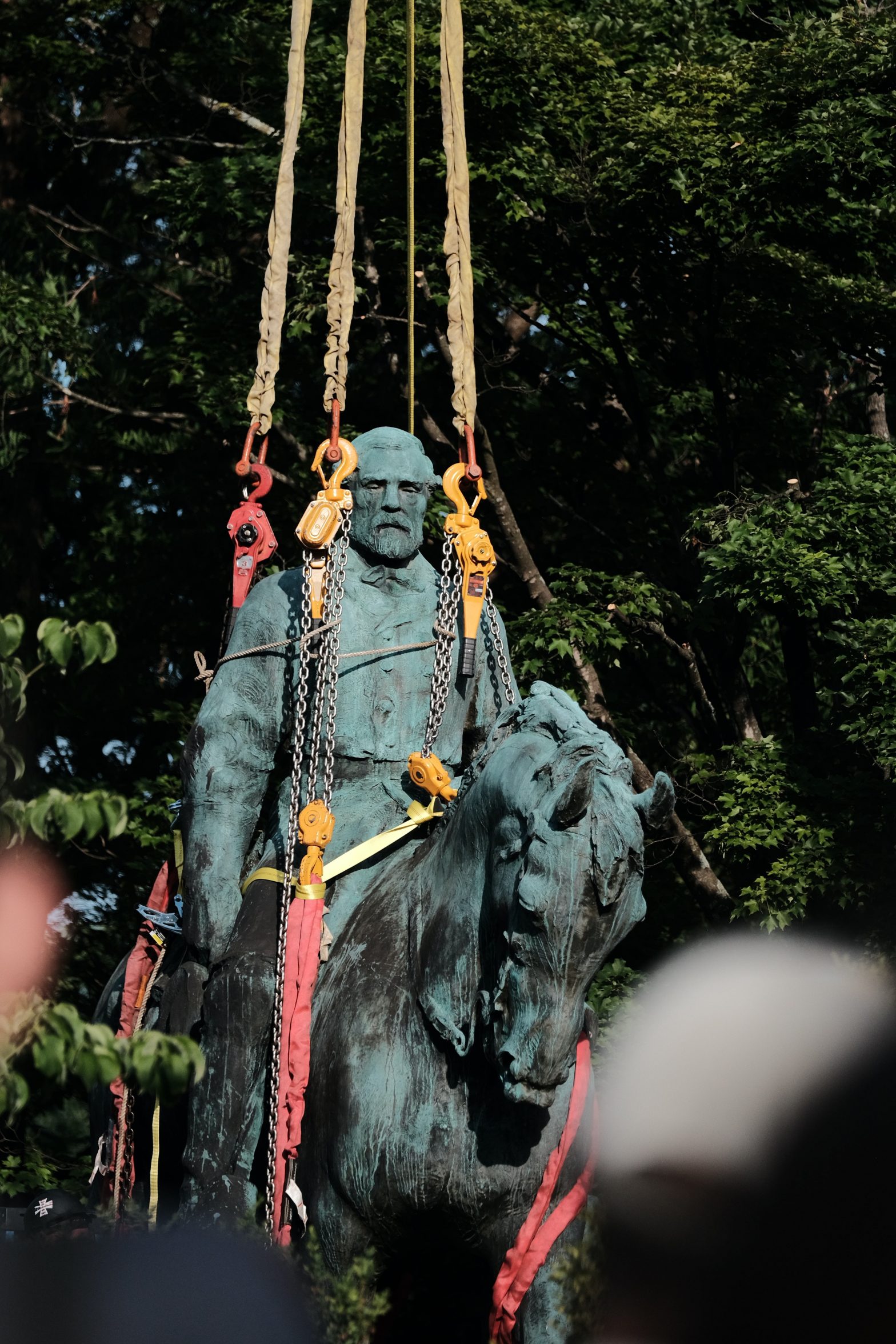For nearly a century, Charlottesville’s Robert E. Lee statue—erected during the Jim Crow era, in the heyday of the Ku Klux Klan—towered above the park at the city’s center, signaling to Black residents that they were not wanted downtown. After years of court battles and a deadly white supremacist rally, the city removed the racist monument last summer and donated it to the Jefferson School African American Heritage Center, which plans to melt down the statue and use the bronze to create a new public artwork, one that is welcoming and inclusive of the entire community.
On Saturday, the Jefferson School kicked off the innovative project, titled Swords Into Plowshares, hosting its first community engagement session at the museum. More than 50 community members attended the event, and dozens more tuned in on Zoom.
“We’re not looking for the representation of the Black body to replace the object. We’re looking for the representation of Charlottesville and how Charlottesville deals with its own needs towards healing,” said Andrea Douglas, executive director of the Jefferson School. “Something happened to us. Something has been happening to us. So how do we channel all of that energy?”
Jalane Schmidt, a member of the project’s steering committee, showed attendees a slideshow of various memorials, and discussed the feelings they conjure in the viewer. While some, like the Vietnam Veterans Memorial, may make visitors feel mournful or somber, others, like the Montgomery Civil Rights Memorial, are focused on inspiring guests to think deeply and reflect upon Black history. “What does it mean to incorporate everybody and express our values in our public spaces?” she asked.
Douglas explained that the new artwork does not have to be limited to the melted bronze, and could be made of a variety of other materials. It could also include several objects, and be installed at multiple locations around the city. “We have no boundaries,” she said.
Schmidt pointed to the University of Virginia’s Memorial to Enslaved Laborers as proof that “thinking out loud and thinking together” can yield positive results. The memorial came to fruition through a robust community engagement process, including surveys and public forums for students, staff, faculty, alumni, local residents, and descendants of enslaved laborers.
Project participants were later asked to divide into small groups, and discuss their aspirations for the artwork, using a provided list of questions. In one group, Paola Christy shared some of the difficulties she’s faced raising a biracial child in Charlottesville, and emphasized the need for more representation and spaces for children of color. Her teenage daughter, Zaharra Colla, added that many places in Charlottesville are unwelcoming. “It’s not always about the place—but the people,” she said.
The group agreed that the project should focus on the city’s Black history, such as the 1964 destruction of Vinegar Hill, which was home to many of the city’s Black-owned businesses. Christy suggested the art installation include an interactive model of Vinegar Hill, which might make it easier for young people to engage with and understand the history, as well as inspire them to pursue entrepreneurship and other important careers.
Colla agreed the artwork should be interactive and educational, as well as bring the community together and foster mutual respect and appreciation. “The future is my generation and what’s being put into our mind,” she added.
Representatives from each small group later shared the ideas they had discussed. Several emphasized the importance of the artwork honoring the city’s Black history and residents rather than attempting to assuage white people’s guilt. “These public places used to be Black neighborhoods,” said one attendee.
Many groups shared that the project should be safe and accessible to all, and engage a variety of age groups, by, say, including doors visitors can walk through. One suggested the artwork have a playful or whimsical feel, completely transforming the hateful energy of the Lee statue.
When the statue was first awarded to the Jefferson School, a group that lost out on the bidding filed a letter of protest and then a lawsuit against the city. The group, represented by the same lawyers who sued to keep the Confederate statues up, alleged that the statue-awarding process had been conducted improperly. But the Jefferson School is moving forward with its project.
After hosting engagement sessions throughout the spring and summer, the Jefferson School plans to compile the community’s input into a guiding document this fall. In the winter, it will issue a request for proposals, requiring interested artists to attend public forums and engage with the community. The organizers hope the new public artwork will be completed and offered to the city by 2026.
“Our goal at the end of it is to create something so representative that when we offer it to Charlottesville, they’ll say yes,” said Douglas.
Douglas encouraged participants to get more community members involved, and complete the survey on the Swords Into Plowshares website. The Jefferson School is also working to raise money for the costly project, and recruit ambassadors to get the word out.
The next community engagement session will be held in May.


